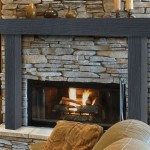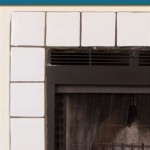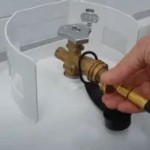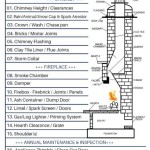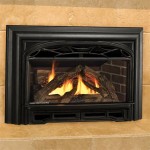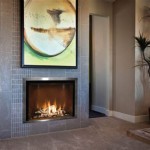How To Build A Small Outside Fireplace
An outdoor fireplace can serve as a captivating focal point for any backyard, providing warmth, ambiance, and a gathering space for friends and family. While larger, more elaborate fireplaces require professional construction, a smaller version can be a manageable DIY project. This article details the steps involved in building a small outdoor fireplace, emphasizing safety, planning, and proper construction techniques.
Before embarking on this project, it is crucial to investigate local building codes and regulations. Many municipalities have specific rules regarding the placement and construction of outdoor fireplaces, including setback distances from property lines, required permits, and permissible materials. Ignoring these regulations can lead to fines and the necessity to dismantle the structure. Contact your local building department to obtain the necessary information and ensure compliance.
Furthermore, safety considerations are paramount. Choose a location that is far away from flammable materials such as trees, fences, and sheds. Have a readily available water source, such as a garden hose, nearby to extinguish any accidental fires. It is also advisable to have a fire extinguisher on hand. Wear appropriate safety gear during construction, including safety glasses, gloves, and a dust mask.
Planning and Design
The first step in building a small outdoor fireplace involves meticulous planning and design. The size and style of the fireplace will depend on the available space and personal preferences. Consider the overall aesthetic of your backyard and choose materials that complement the existing landscape. Common materials include concrete blocks, bricks, natural stone, and fire bricks.
A basic small outdoor fireplace consists of a firebox, a chimney, and a base. The firebox is the area where the fire will be contained. The chimney is responsible for venting smoke and fumes away from the seating area. The base provides a stable foundation for the entire structure. The dimensions of each component will vary depending on the desired size of the fireplace. A typical firebox might be 36 inches wide, 24 inches deep, and 24 inches high. The chimney should extend at least two feet above the highest nearby structure to ensure proper drafting.
Create a detailed sketch or blueprint of the fireplace, including precise measurements. This will serve as a guide during the construction process and help avoid costly mistakes. Consider using online design tools or consulting with a professional landscape designer for assistance with the design process. It's important to specify the materials to be used in the design phase, accounting for fire resistance and durability. Fire bricks are essential for lining the firebox itself, as they are designed to withstand high temperatures. Regular bricks or stone can be used for the exterior, but they should be of good quality and resistant to weathering.
The foundation is the most critical element of any masonry structure. A solid, level foundation is essential for preventing cracking and settling. Choose a location with firm, stable soil. Excavate the area to a depth of at least 12 inches. Fill the excavation with compacted gravel to a depth of 6 inches. Pour a concrete slab on top of the gravel, ensuring that it is level. The thickness of the concrete slab should be at least 4 inches. Allow the concrete to cure completely before beginning construction of the fireplace. This may take several days, depending on weather conditions.
Construction Process
Once the foundation has cured, begin constructing the base of the fireplace. Lay the first course of concrete blocks or bricks, ensuring that they are level and properly aligned. Use a mortar mix specifically designed for masonry construction. Apply the mortar evenly between the blocks or bricks, and remove any excess mortar with a trowel. Continue laying courses of blocks or bricks until the base reaches the desired height. A typical base height is around 12 inches.
Next, construct the firebox. Line the interior of the firebox with fire bricks, using fire clay mortar. Fire clay mortar is specifically designed to withstand the high temperatures of a fire. Ensure that the fire bricks are tightly fitted together, with minimal gaps. Construct the firebox walls using concrete blocks or bricks, similar to the base. Leave an opening at the front of the firebox for access. Consider including a lintel or arch above the opening for structural support.
When constructing the chimney, it is crucial to ensure that it is properly aligned and structurally sound. Use a plumb bob to ensure that the chimney is vertical. Use a chimney liner to protect the masonry from the corrosive effects of smoke and fumes. The chimney liner should be made of stainless steel or fire clay. Extend the chimney at least two feet above the highest nearby structure. Cap the chimney with a chimney cap to prevent rain and debris from entering. The chimney cap should also include a spark arrestor to prevent embers from escaping and potentially causing a fire.
During the construction of the firebox and chimney, it is important to periodically check for level and plumb. Use a level to ensure that each course of blocks or bricks is level. Use a plumb bob to ensure that the walls are vertical. Adjust as needed to maintain a consistent and structurally sound structure. Let the mortar cure completely before using the fireplace; this typically takes at least 72 hours.
Materials and Tools
The success of this project depends on using the correct materials and tools. Essential materials include concrete blocks, bricks, fire bricks, mortar mix, fire clay mortar, gravel, concrete, and a chimney liner. The specific quantity of each material will depend on the size and design of the fireplace. It is advisable to purchase slightly more materials than estimated to account for waste and errors.
Essential tools include a shovel, a wheelbarrow, a trowel, a level, a plumb bob, a measuring tape, a chisel, a hammer, a concrete mixer (optional), a safety glasses, gloves, and a dust mask. A concrete mixer can be helpful for mixing large batches of concrete and mortar. A chisel and hammer may be necessary for shaping and cutting blocks or bricks. A brick saw can be used for more precise cuts.
When selecting materials, prioritize quality and durability. Choose concrete blocks and bricks that are free from cracks and defects. Select a mortar mix that is specifically designed for masonry construction. Ensure that the fire bricks are rated for high temperatures. Use a chimney liner that is made of stainless steel or fire clay. The selection of quality materials dramatically impacts the longevity and safety of the completed fireplace.
Proper mortar mixing is crucial for the stability of the structure. Follow the manufacturer's instructions carefully when mixing the mortar. Add water to the dry mortar mix gradually, until it reaches a smooth, workable consistency. Avoid adding too much water, as this will weaken the mortar. Mix the mortar thoroughly to ensure that all of the ingredients are properly combined. Use the mortar within a reasonable timeframe, as it will begin to harden after a few hours.
Finally, after the fireplace is complete, allow it to cure for several days before using it. This allows the mortar to fully harden and strengthen the structure. Start with small fires to gradually season the firebox. Regularly inspect the fireplace for any signs of damage or wear. Repair any cracks or defects promptly to prevent further deterioration. By following these steps, you can build a small outdoor fireplace that will provide years of enjoyment.

How To Build An Outdoor Fireplace Step By Guide Buildwithroman

How To Build An Outdoor Fireplace Step By Guide Buildwithroman

How To Build An Outdoor Fireplace Step By Guide Buildwithroman

How To Build An Outdoor Stacked Stone Fireplace

22 Cozy Diy Outdoor Fireplaces Fire Pit And Fireplace Ideas

Pima Ii Diy Outdoor Fireplace Construction Plan Backyard Designs

How To Build An Outdoor Fireplace Step By Guide Buildwithroman

Stonetutorials Living Stone Masonry
:max_bytes(150000):strip_icc()/milkpaint-286c9ee63b604ca1aaecac5233c8a3f3.jpg?strip=all)
10 Free Outdoor Fireplace Construction Plans

Stonetutorials Living Stone Masonry

